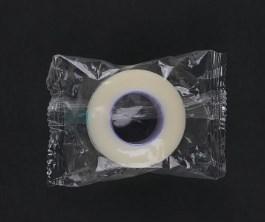Surgical Tape, a seemingly simple yet remarkably versatile product, has become an indispensable component in the medical field and beyond. Known for its adhesive properties and ability to conform to various body contours, it plays a crucial role in wound care, securing medical devices, and providing support for sprains and strains. This article delves into the multifaceted uses, benefits, and considerations of using surgical tape in different scenarios.
The primary function of surgical tape is to provide a secure yet gentle hold on bandages, dressings, and other medical devices. Its hypoallergenic and non-irritating nature makes it suitable for sensitive skin, reducing the risk of skin reactions and ensuring patient comfort during treatment. The adhesive used in the surgical tape is designed to be strong enough to stay in place but gentle enough to remove without causing pain or damage to the skin.
One of the most common uses of surgical tape is in wound care. It is used to hold sterile dressings in place, protecting the wound from external contaminants and facilitating the healing process. The tape's ability to conform to body contours allows it to be used on various parts of the body, including joints and areas with uneven surfaces. This adaptability makes surgical tape an ideal choice for securing dressings in place without restricting movement or causing discomfort.
In addition to wound care, surgical tape is also used to secure medical devices such as IV lines, catheters, and monitoring equipment. Its strong adhesive properties ensure that these devices remain in place, reducing the need for frequent readjustments and minimizing the risk of dislodgement. This not only improves patient safety but also streamlines the workflow for healthcare professionals.
Surgical tape is also beneficial in providing support for sprains and strains. When applied in a specific pattern, it can offer additional support to injured muscles and joints, helping to reduce swelling and promote healing. This makes it a popular choice for athletes and individuals who have suffered minor injuries.
Another advantage of surgical tape is its breathability. Unlike some other types of adhesive tapes, surgical tape allows air to reach the skin, reducing the risk of skin maceration and promoting a healthier healing environment. This is particularly important for patients with chronic wounds or those who require long-term use of tape for medical purposes.
However, it is essential to use surgical tape correctly to maximize its benefits and avoid potential complications. Overuse or improper application can lead to skin irritation, allergic reactions, or even skin breakdown. It is crucial to follow the manufacturer's instructions and consult with healthcare professionals when using surgical tape for specific medical conditions.
In conclusion, surgical tape is a versatile and valuable tool in the realm of healthcare and personal care. Its gentle adhesive properties, breathability, and adaptability make it suitable for a wide range of applications, from wound care to securing medical devices. By understanding the proper use and benefits of surgical tape, individuals and healthcare professionals can harness its potential to promote healing and improve patient outcomes.



